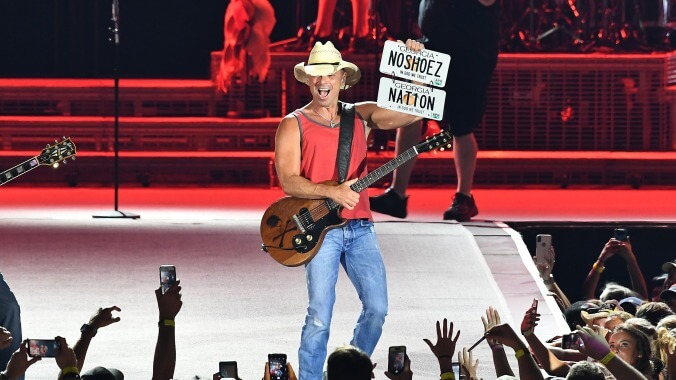This is per Billboard, which reported today on a study conducted by Jada E. Watson at the University Of Ottawa, analyzing both 2018's airplay charts, as well as year-end reports of top songs dating back to 2000. Looking through the data, Watson found that not only does America’s most-played female country artist, Carrie Underwood, come in with less radio time than all 10 of the top male male artists, but that men in general are 58 percent more likely to have their songs played than women.
Watson goes on to suggest that at least some of this discrepancy comes down to an ugly little self-fulfilling prophecy exemplified by a quote from a 2015 interview with influential country radio consultant Keith Hill, who, for some reason, decided to compare the country music industry to a salad: “The lettuce is Luke Bryan and Blake Shelton, Keith Urban and artists like that. The tomatoes in our salad are the females.” Said “tomatoes” have thus been forced to live with what’s sometimes known as the “13 to 15 percent” rule, which suggests that country music audiences only want to hear a group with a woman prominently featured in it at roughly that unflattering ratio.
But as Watson points out, that kind of thinking doesn’t just reflect (or drastically fail to reflect, if we’ve being honest) the realities of modern country: It also shapes the future, as country radio stations train country radio listeners in what a country radio station “should be.” Watson’s study notes that, over the last 18 years, female artist airplay has steadily gone down, pointing out an increasing gulf in the number of songs that make it onto the stations’ year-end reports of most-played songs.
None of which, of course, is going to stop female country artists from breaking out of their salad bowls and making whatever sort of music they want—something that the internet has, of course, only made immeasurably easier. Still, it’s a reminder of how slow some institutions can be to change, even when the people who actually empower them are ready for something new.

